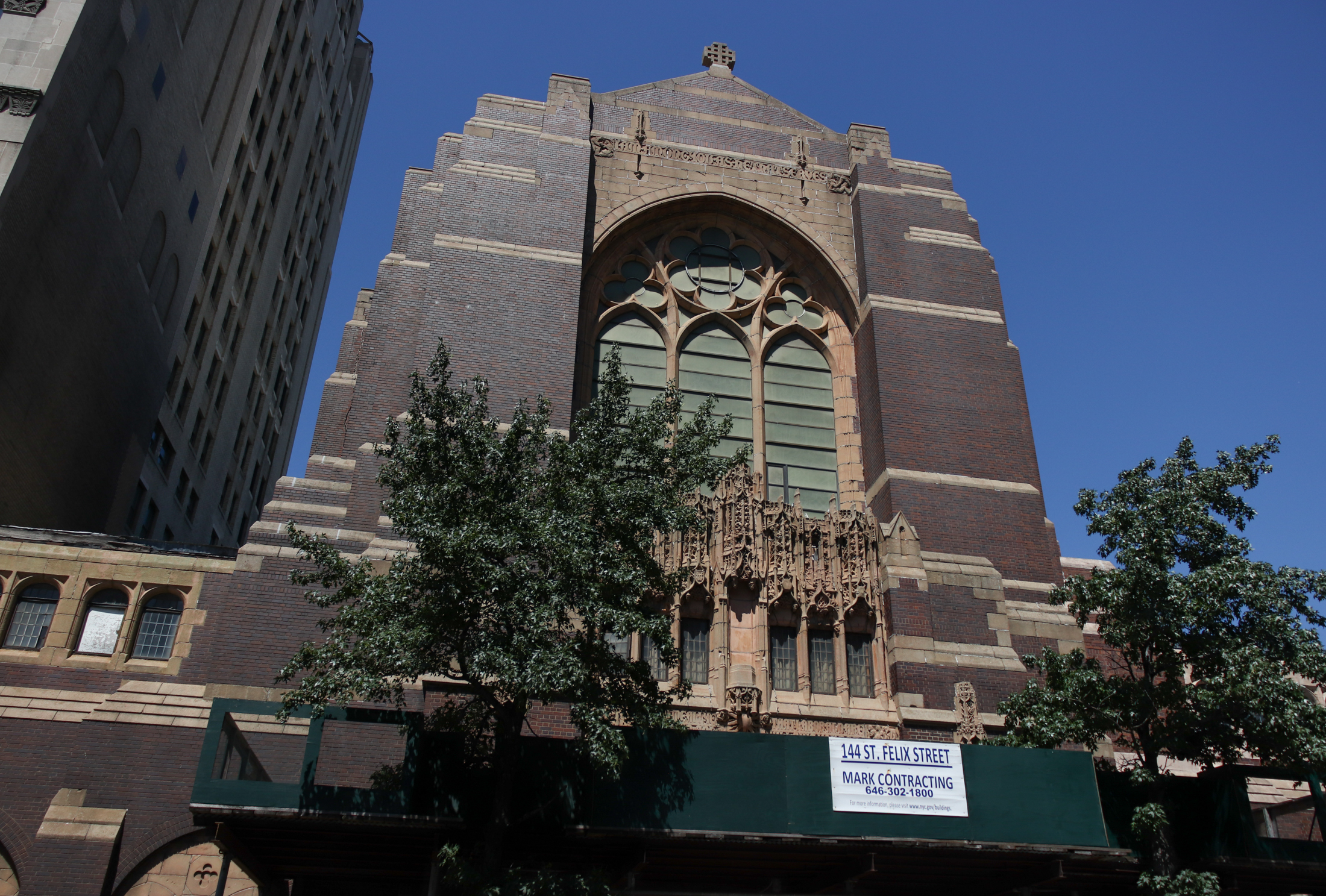Past and Present: Brooklyn Hospital
A Look at Brooklyn, then and now. In Brooklyn’s early days, if you needed a doctor, he either made house calls, or you went to his office, in his home. There were no public hospitals. This became an acute embarrassment in 1839, when a visitor from Buffalo was struck by a wagon on Fulton Street,…

A Look at Brooklyn, then and now.
In Brooklyn’s early days, if you needed a doctor, he either made house calls, or you went to his office, in his home. There were no public hospitals. This became an acute embarrassment in 1839, when a visitor from Buffalo was struck by a wagon on Fulton Street, and broke his leg. Mayor Cyrus Smith, who actually witnessed the accident, had the man taken to a private house nearby where he personally paid for the man’s care. Brooklyn needed a hospital. Six years later, it was Smith who finally succeeded in calling a meeting to discuss the creation of a hospital in Brooklyn. In 1845, the state legislature approved it, and Smith himself became president of the board of trustees of the newly established Brooklyn City Hospital.
The board’s creation didn’t mean a hospital sprang up immediately. Amazingly enough, it was a hard sell. Fund raising was abysmally slow, with not much money coming in at all. In 1846, the need for a hospital was getting more and more acute, and through the generous donation several of the trustees, especially Augustus Graham, one of Brooklyn’s great philanthropists, and the grandfather of the Brooklyn Museum, enough money was raised to buy a small frame house on Hudson Avenue, downtown, and the Brooklyn City Dispensary opened its doors in 1847.
The building was woefully inadequate from the beginning, but served as the only public hospital until 1852, when the first building in Fort Greene opened. It was so small that there were actually occasions where major surgery took place with other patients in the room; there was nowhere else to put them. In those days before reliable general anesthesia, that must have been quite an education.
74 lots had been purchased next to Fort Greene Park, where Brooklyn Hospital still stands today. Augustus Graham, whose brother founded the Graham Home for Old Ladies on Washington Avenue, was a very generous man. Although he died in 1847, he left the hospital enough money in his will to enable the first buildings to go up, and in a ceremony in 1851, his widow helped lay the hospital’s cornerstone. This first building could hold 161 patients.
The second building in the complex was Pathological Hall, opened in 1858, where the study of the human body took place; with rooms for autopsies, lecture halls, and a research library, only the second building of its kind in the United States. More buildings followed, through the Civil War period and afterward. By the 1890s, the hospital had the first nursing school in Brooklyn, the second in the state. Mrs. Seth Low was president of the school. It also had a large infirmary to treat the indigent and poor, as well as one of the first maternity departments in a general hospital. By 1896, Brooklyn Hospital had its own ambulance service. The original hospital building was torn down in order to build an even larger general hospital centering on an enlarged maternity clinic, general dispensary and infirmary.
The period photograph on the left dates from around that time, definitely before 1907. It shows the steep hill leading from DeKalb Avenue up to the hospital. Telephone poles and electric lines run along the street, as well, and a large sign with “Brooklyn Hospital” faces out towards DeKalb Avenue. None of the buildings in this photograph are still in existence, as we can see in the Google photo, which dates from 2010.
While many of us love and cherish old buildings, we tend to like our hospitals new. Brooklyn Hospital was more or less totally rebuilt, revamped, and reborn between 1990 and 2010, as hospital cuts, closings, and huge changes in the health care system have made it more important to the community than ever. It is now called the Brooklyn Hospital Center, and is part of the New York and Presbyterian Health Care System. GMAP











What's Your Take? Leave a Comment